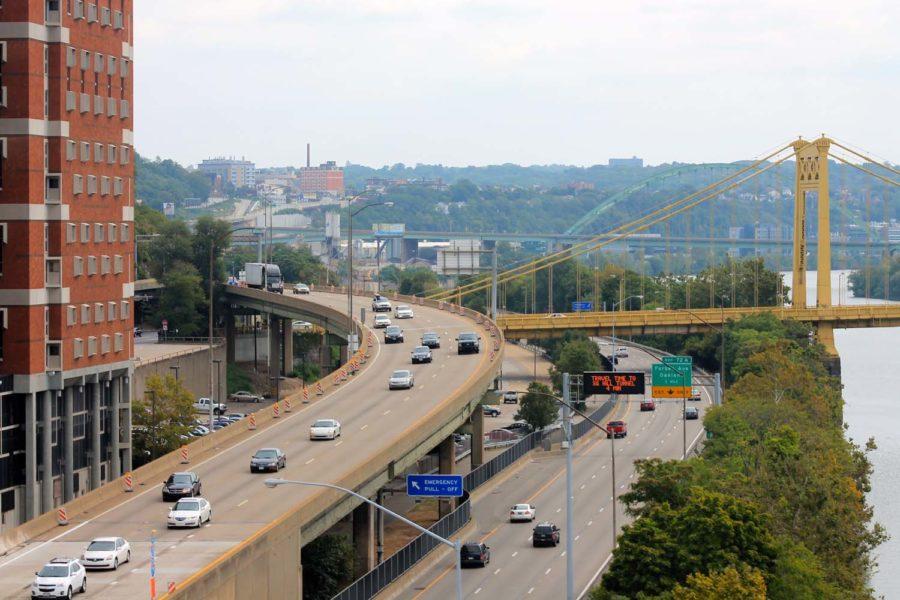Editorial: Penn Avenue bus sinkhole models need for deliberate infrastructure changes in Pittsburgh
The American Society of Civil Engineers awarded Pittsburgh with a C- infrastructure quality rating in November 2018.
October 28, 2019
It was just another day in Pittsburgh traffic for the G31 Bridgeville Flyer yesterday morning — until it wasn’t.
A sinkhole — 20 feet deep — opened up and swallowed the back half of the bus in between Ninth and 10th streets on Penn Avenue Downtown. Miraculously, no passengers on board suffered serious injuries. Still, businesses lost water and power, commuters had to navigate road closures and this sinkhole and bus extraction will cost the City a great deal of money.
Sinkholes are not uncommon here. Pennsylvania has some of the most damaged roads in the country — the fifth worst, according to the Federal Highway Association’s data. Securing money to prevent infrastructure failures can prove difficult, but the City needs to make a more concentrated effort to mitigate the risk of a fiasco such as yesterday’s from happening again.
Beyond sinkholes, infrastructure issues in general in Pittsburgh aren’t a new problem either. The Liberty Bridge nearly collapsed in 2016 after catching fire, and the construction is still ongoing. The American Society of Civil Engineers awarded the City a C- infrastructure quality rating in November 2018. The increasing amount of rainfall in Pittsburgh each year raises additional concerns about the resilience of our current infrastructure — another reason the City should be proactive.
And the increased rainfall is perhaps most concerning for the quality of roads. Sinkholes typically occur when the foundation beneath a road is eroded away — most of the time by rain water — and are particularly dangerous because the road remains solid while the ground underneath hollows out, weakening until it opens up into a pit.
A 60-foot-wide sinkhole opened in Westmoreland County, about 30 minutes outside of City limits, in July. It continued to grow and brought traffic on a main highway down to one lane. A week later, a sinkhole closed a road in the Homewood-Brushton neighborhood. The weather also created dangerous conditions for the construction workers fixing the sinkhole. About three weeks ago, a garbage truck fell into a sinkhole in South Oakland. These occur in Pittsburgh so often that they barely even make headlines anymore.
Preventative measures would benefit both the safety of Pittsburgh residents and the City itself. The largest sinkholes can cost more than $100,000 to repair. Pittsburgh might start by identifying at-risk areas in the City — which often have old pipelines — and put a plan in action to dig them up and repair them. It’s a hefty cost, sometimes close to 1 million dollars, but considering the frequency of sinkholes, and the danger that the bus incident Downtown yesterday posed, preventative costs will likely outweigh the costs of letting an accident such as this happen again.
This time, nobody was seriously injured. But if it happens again, Pittsburgh might not be so lucky.



